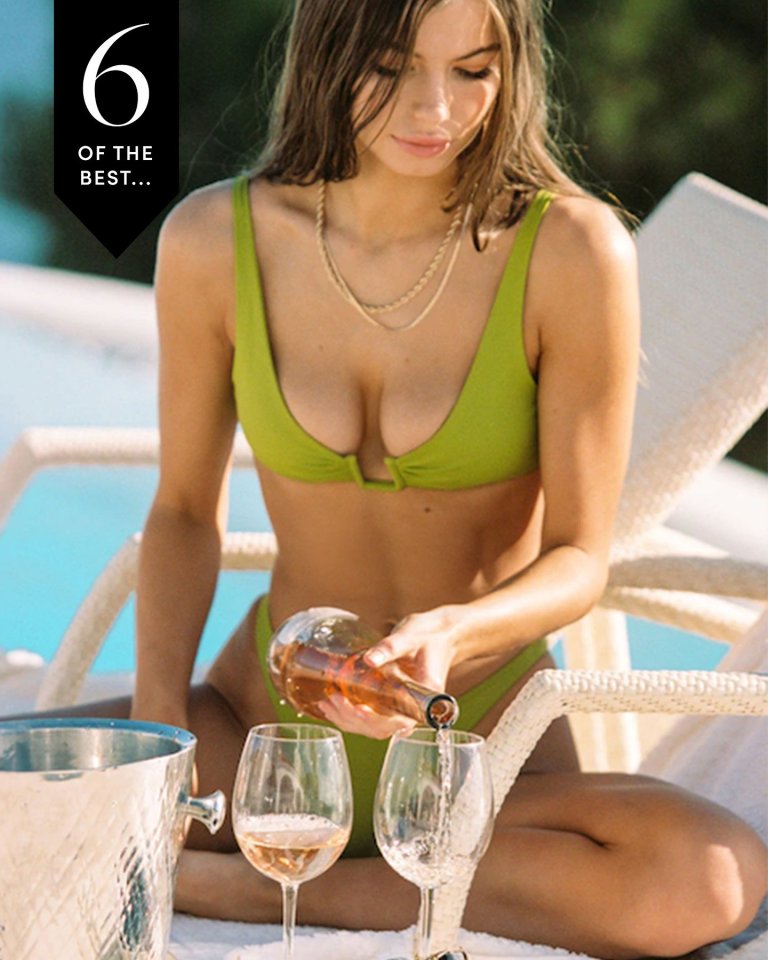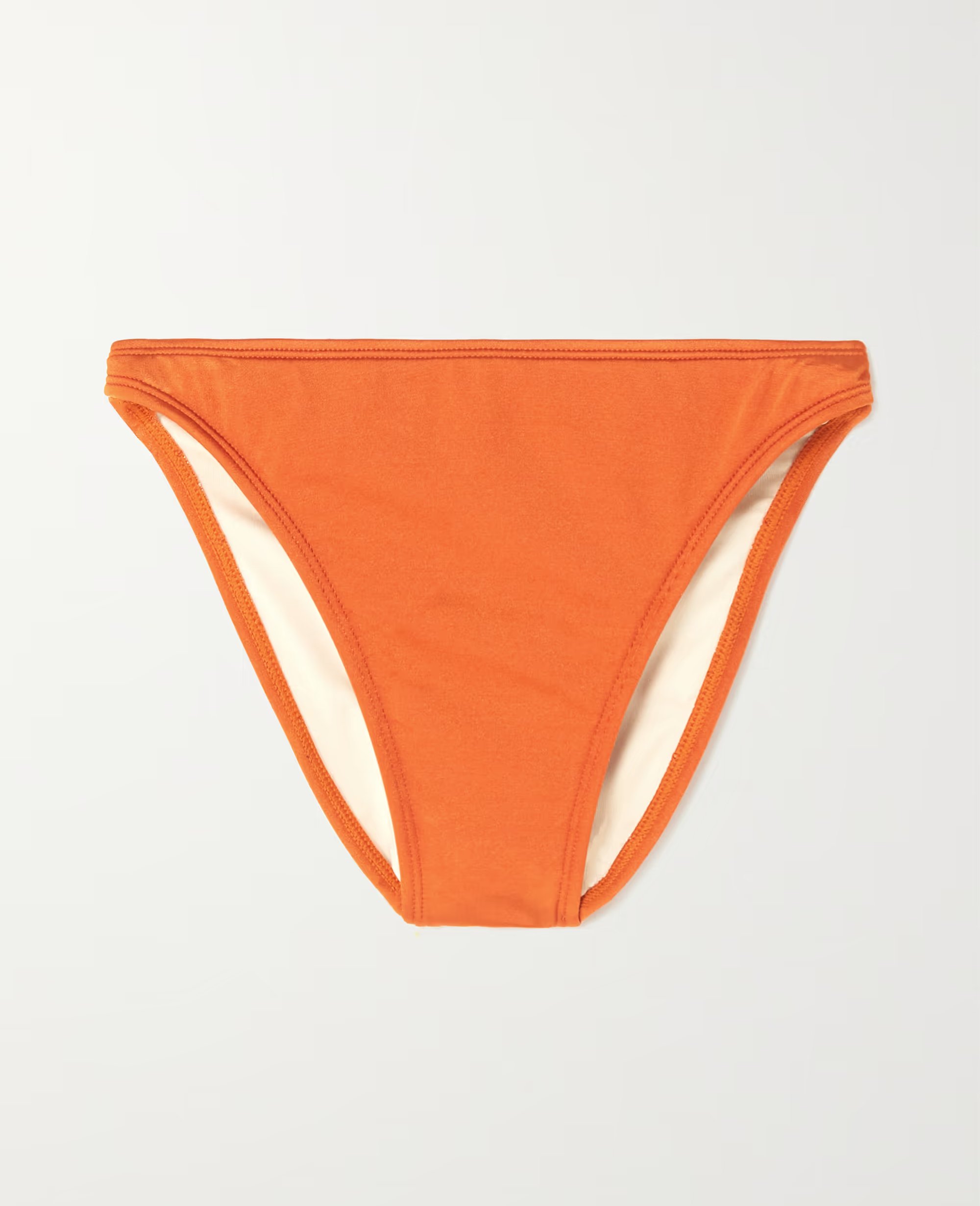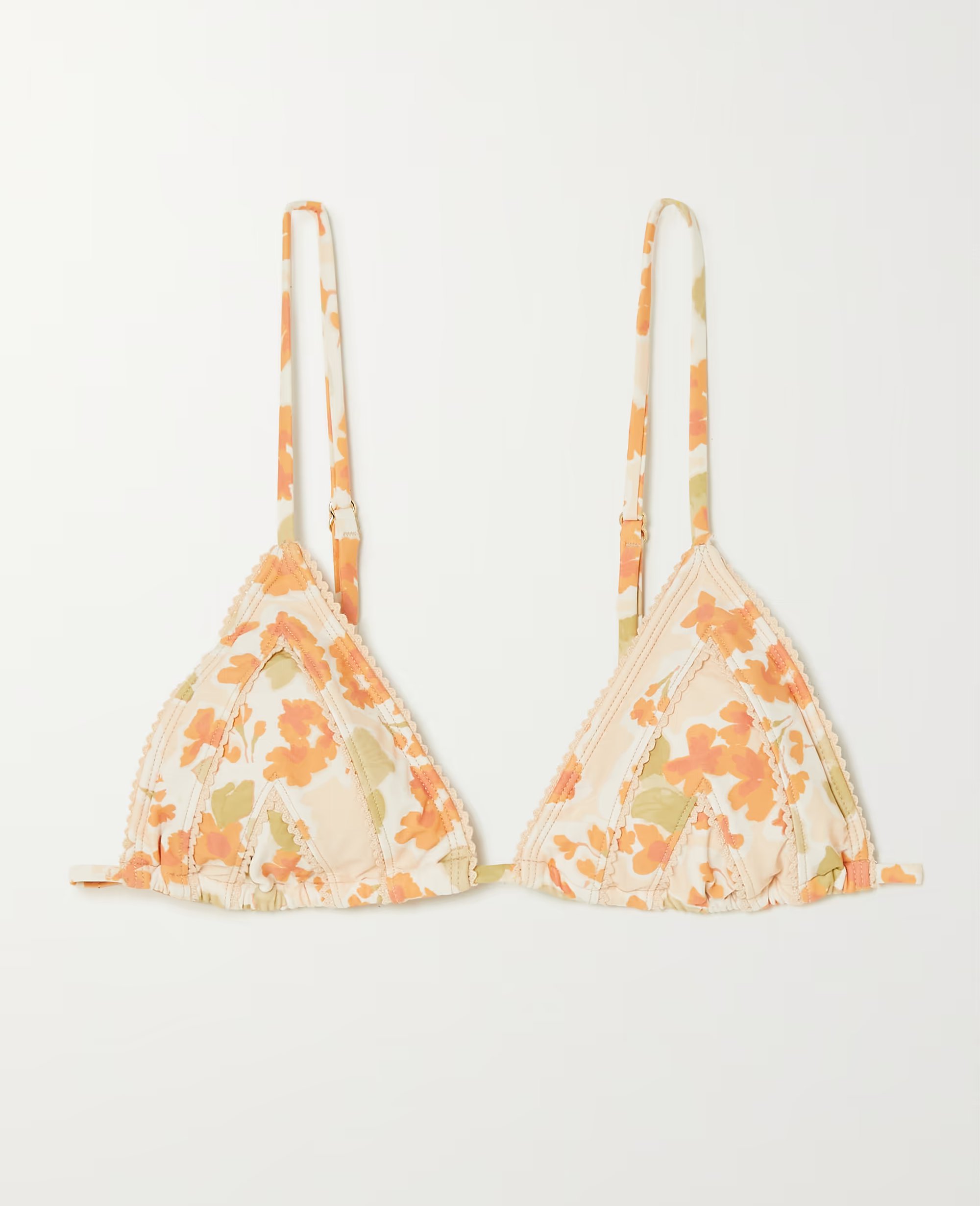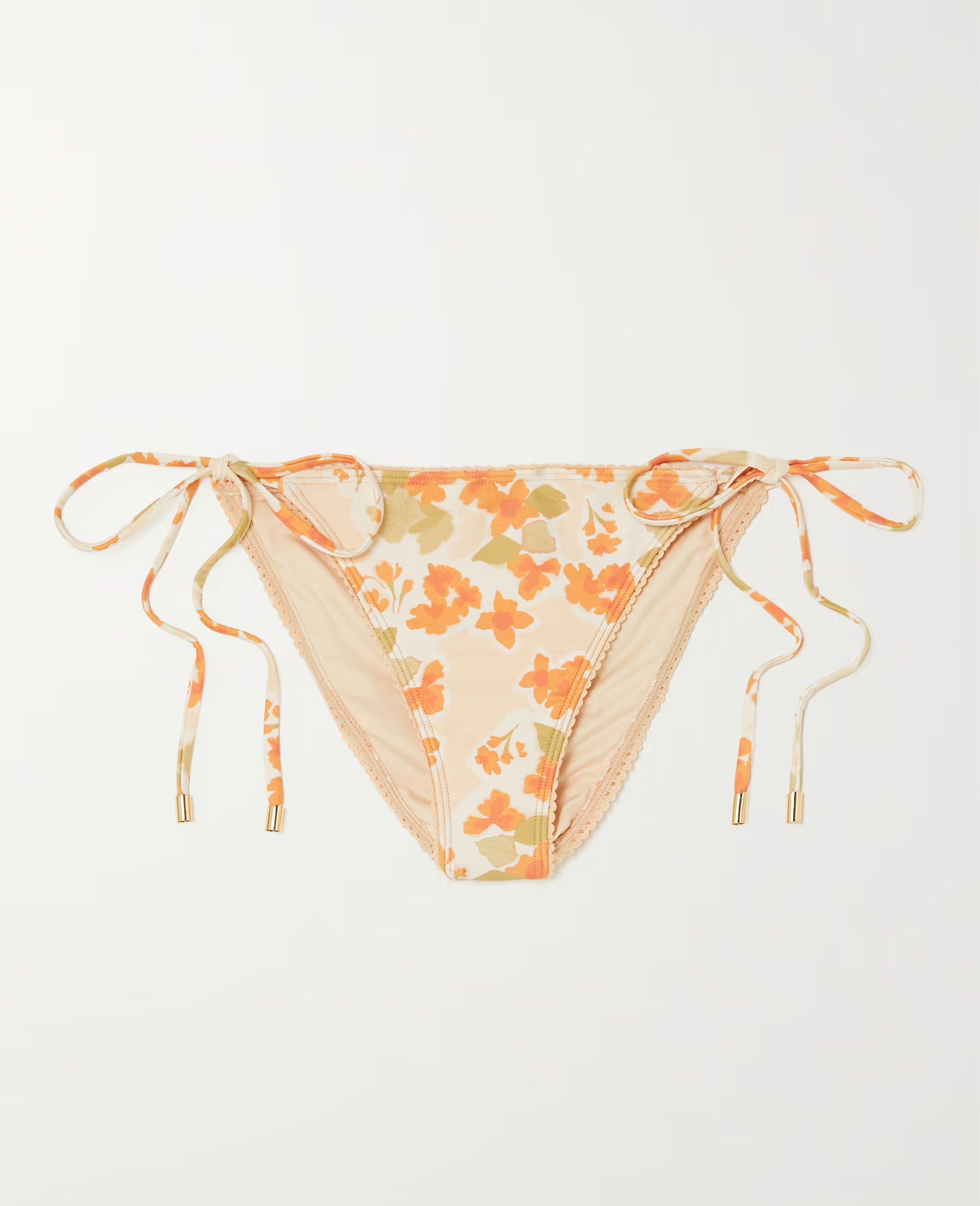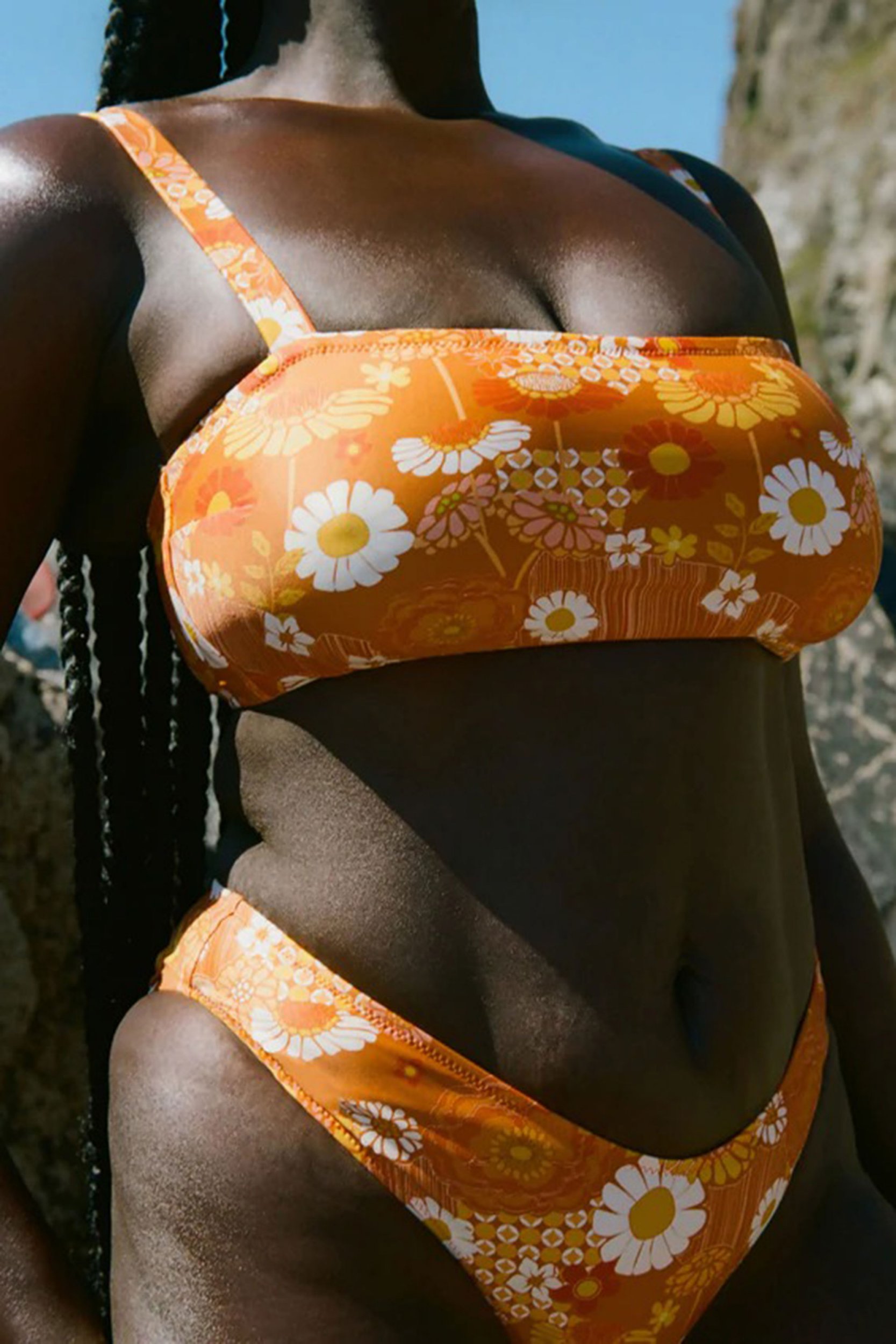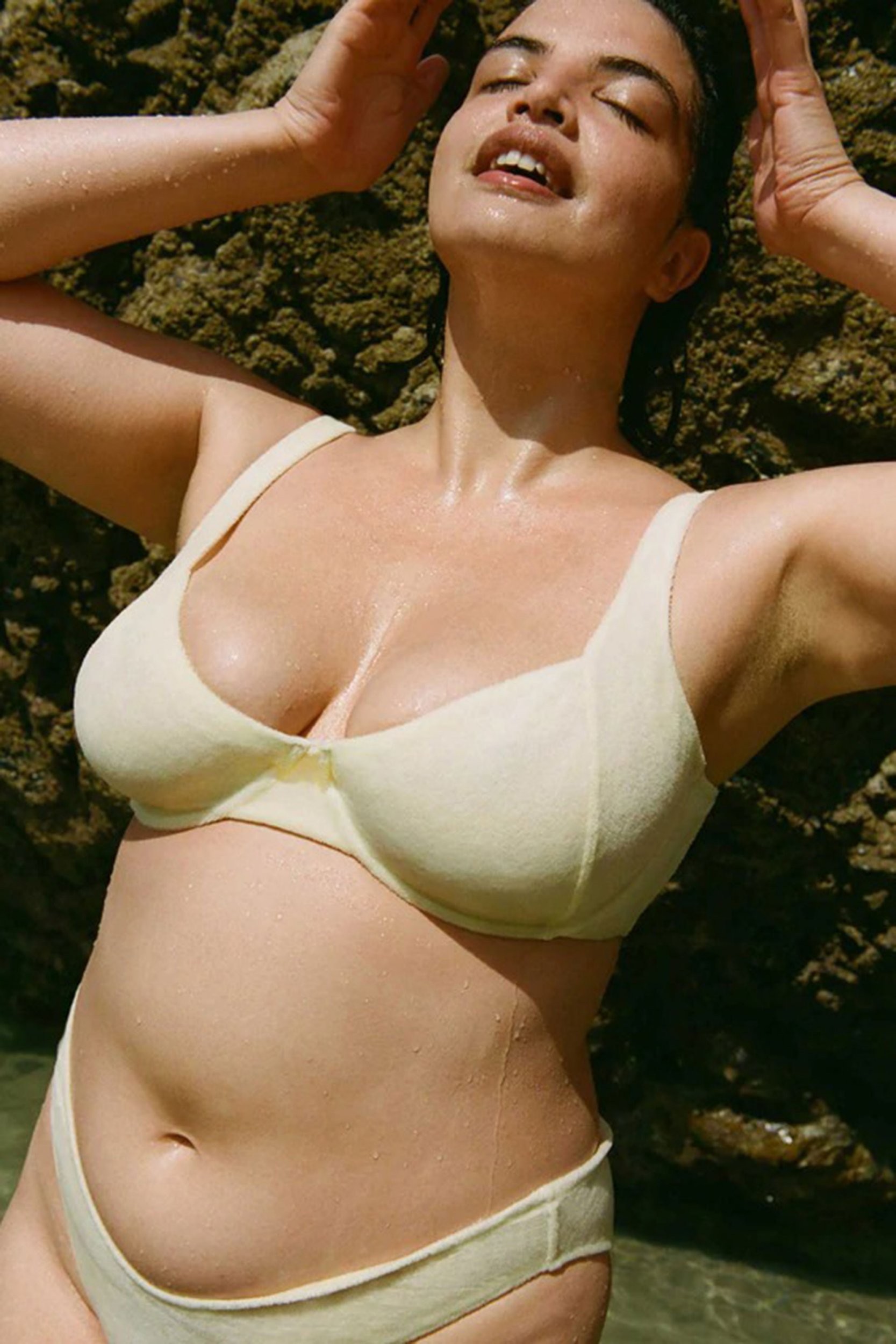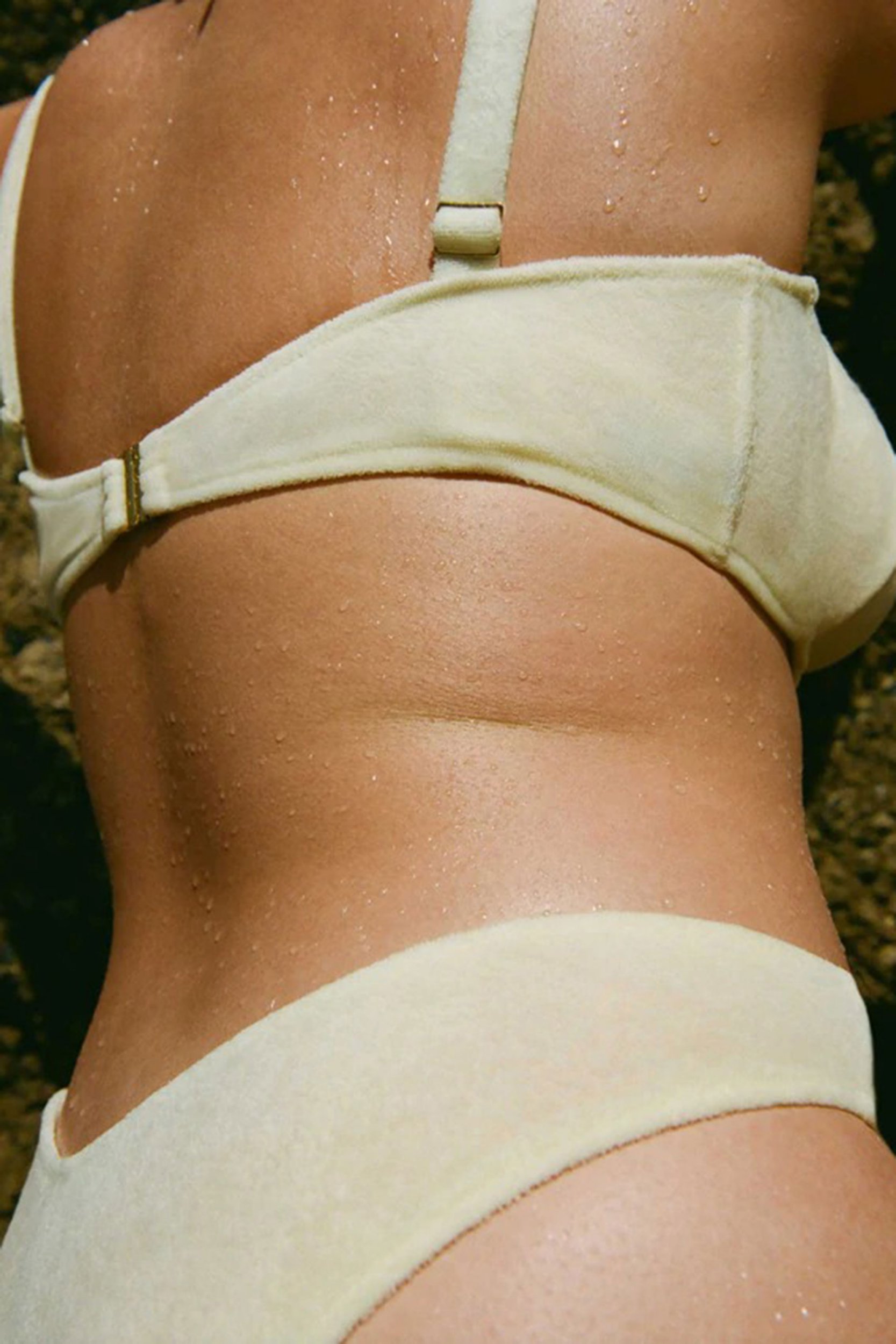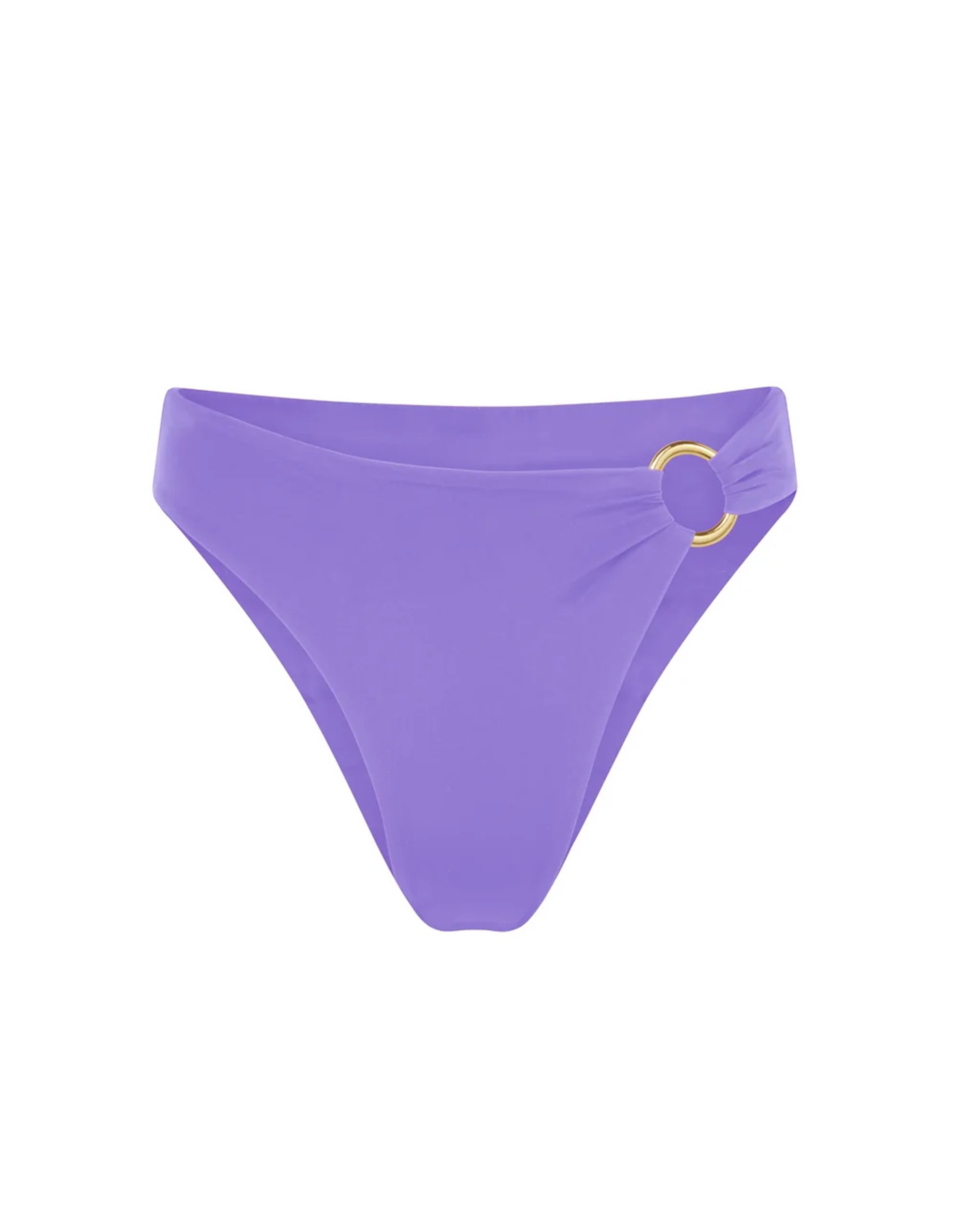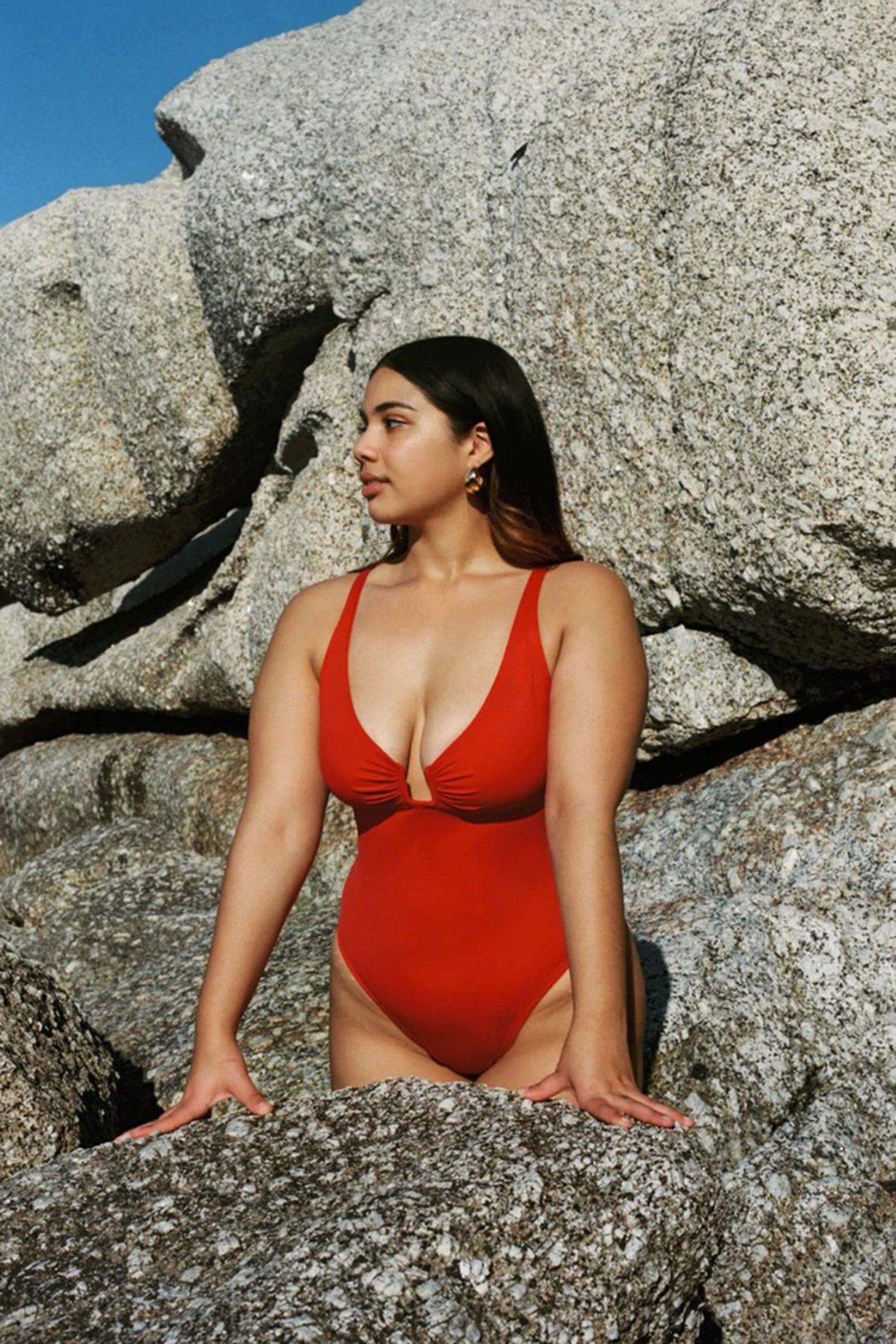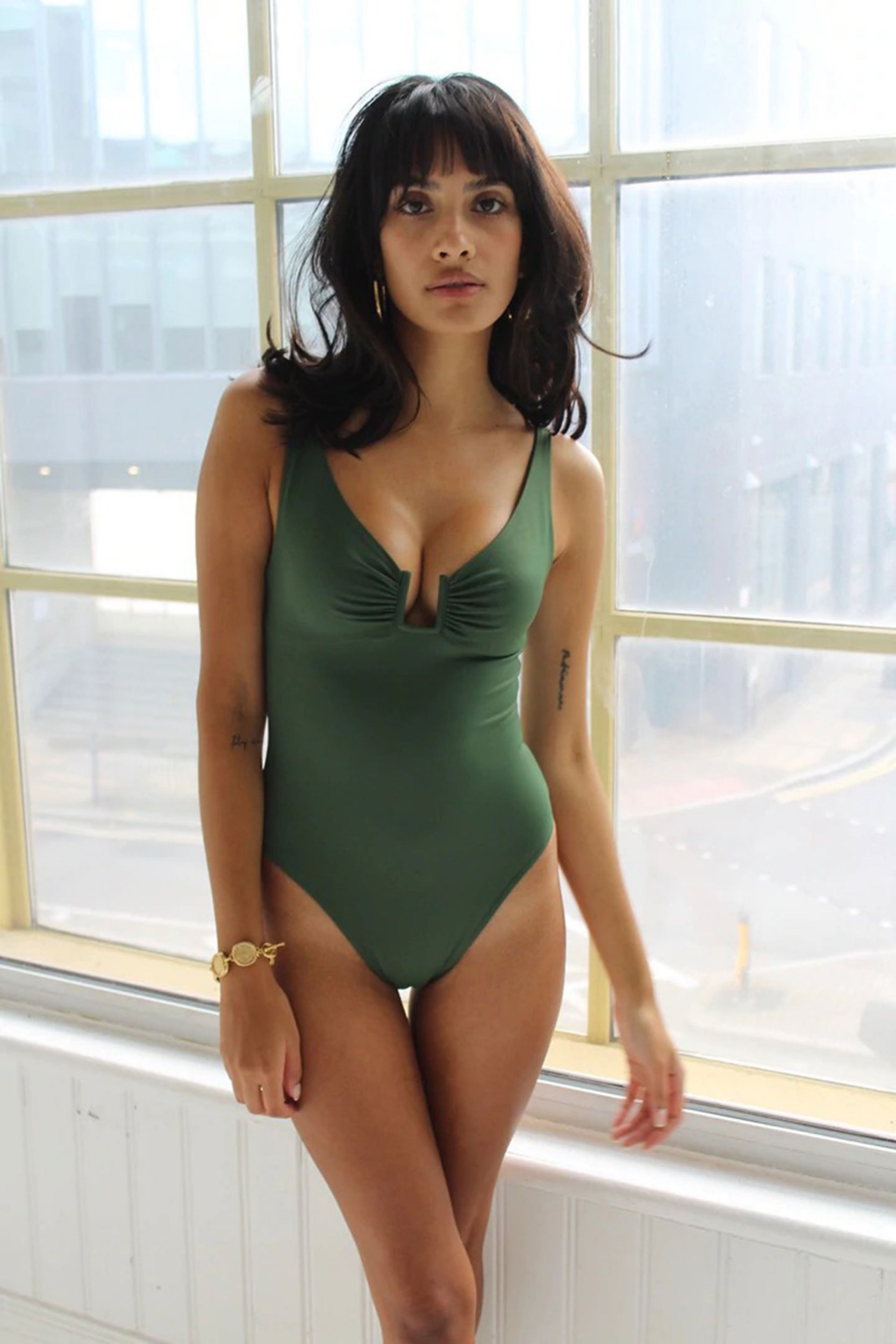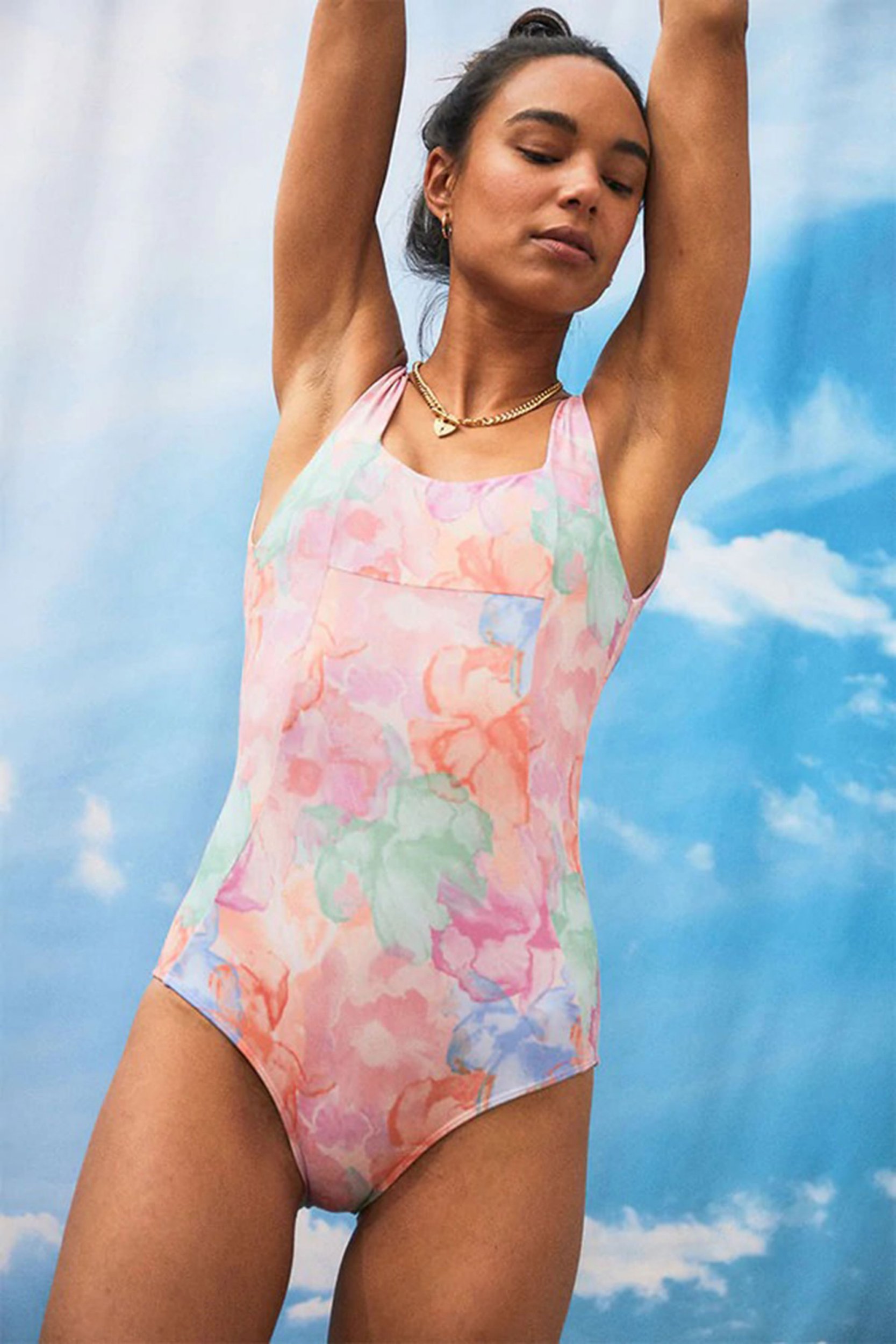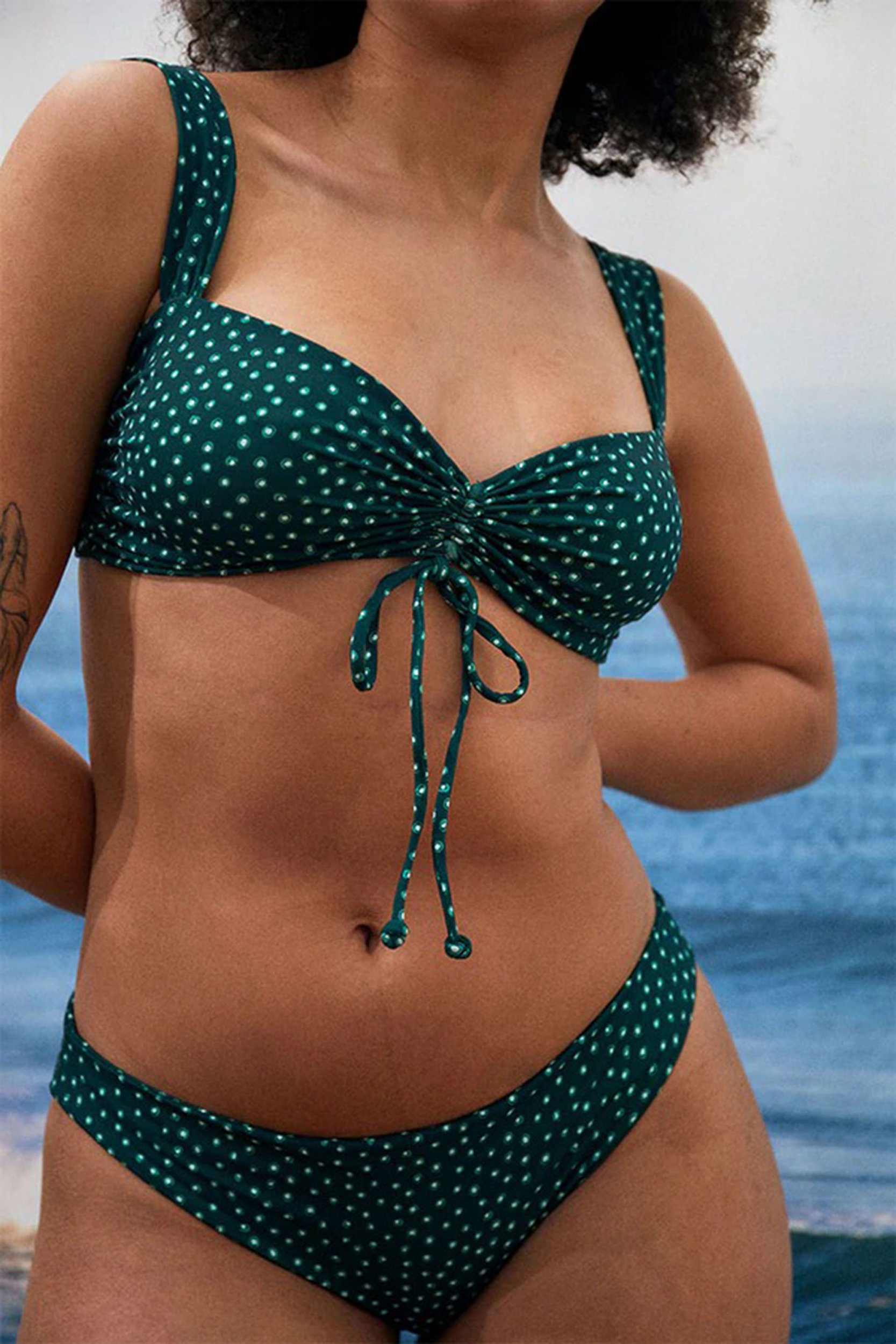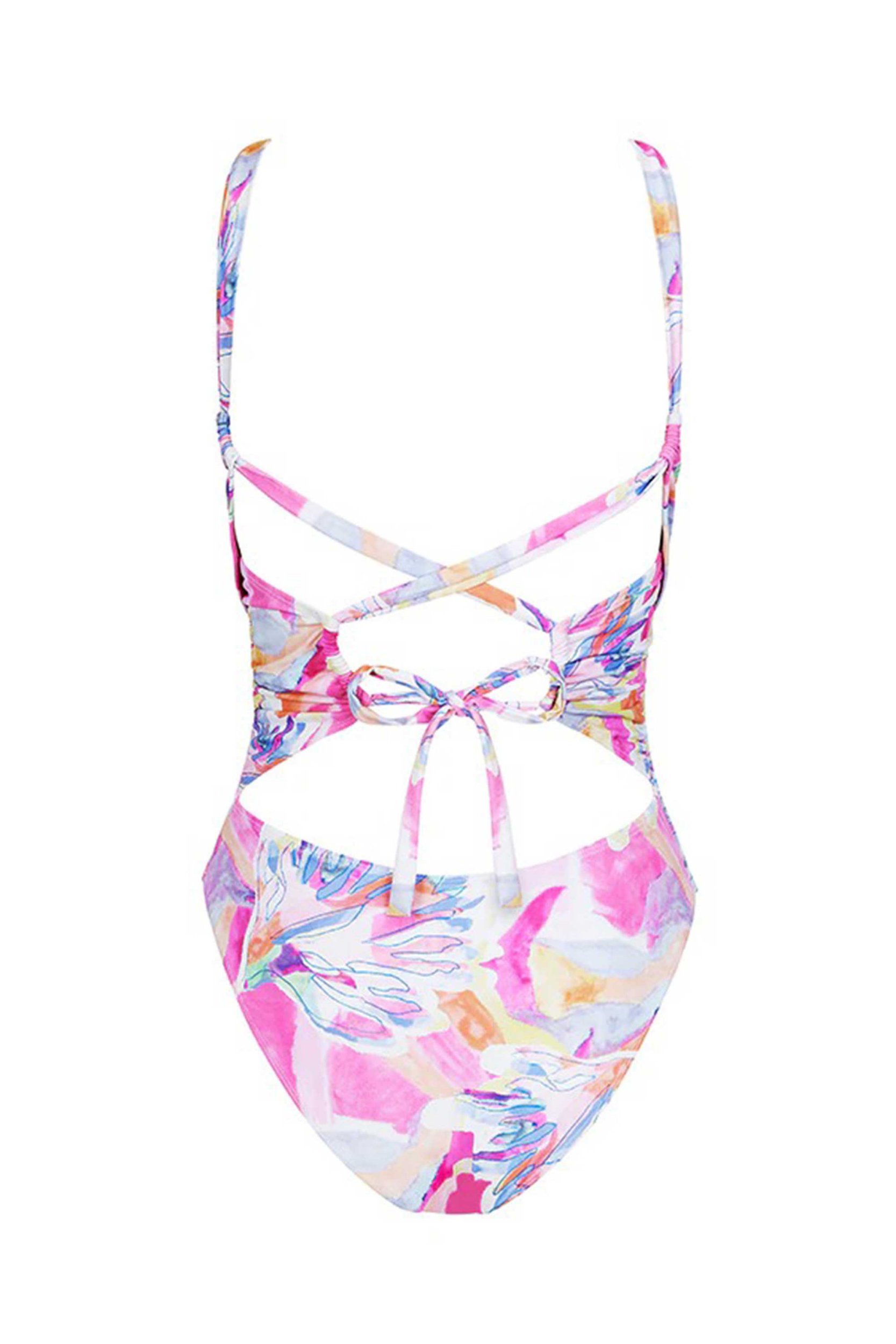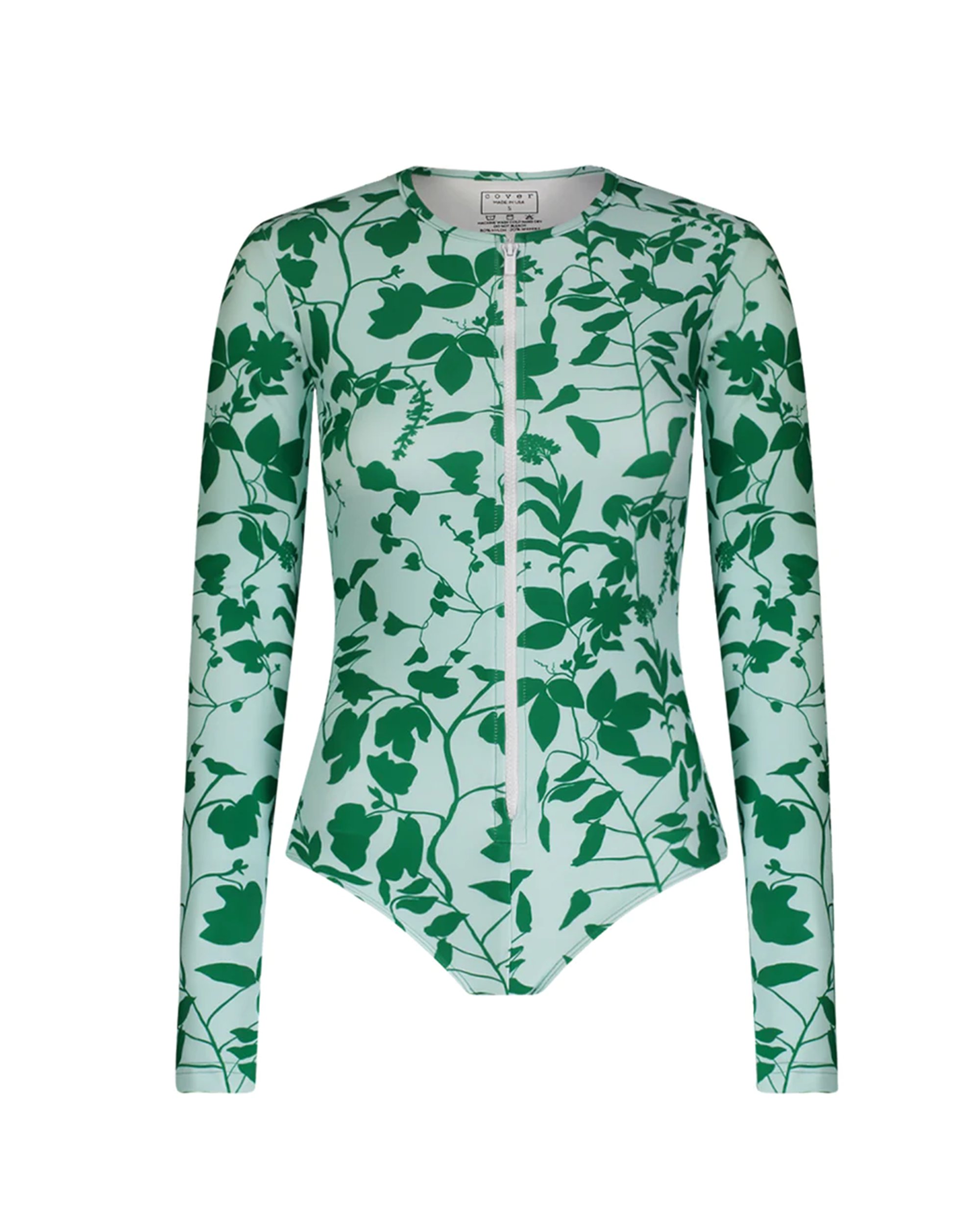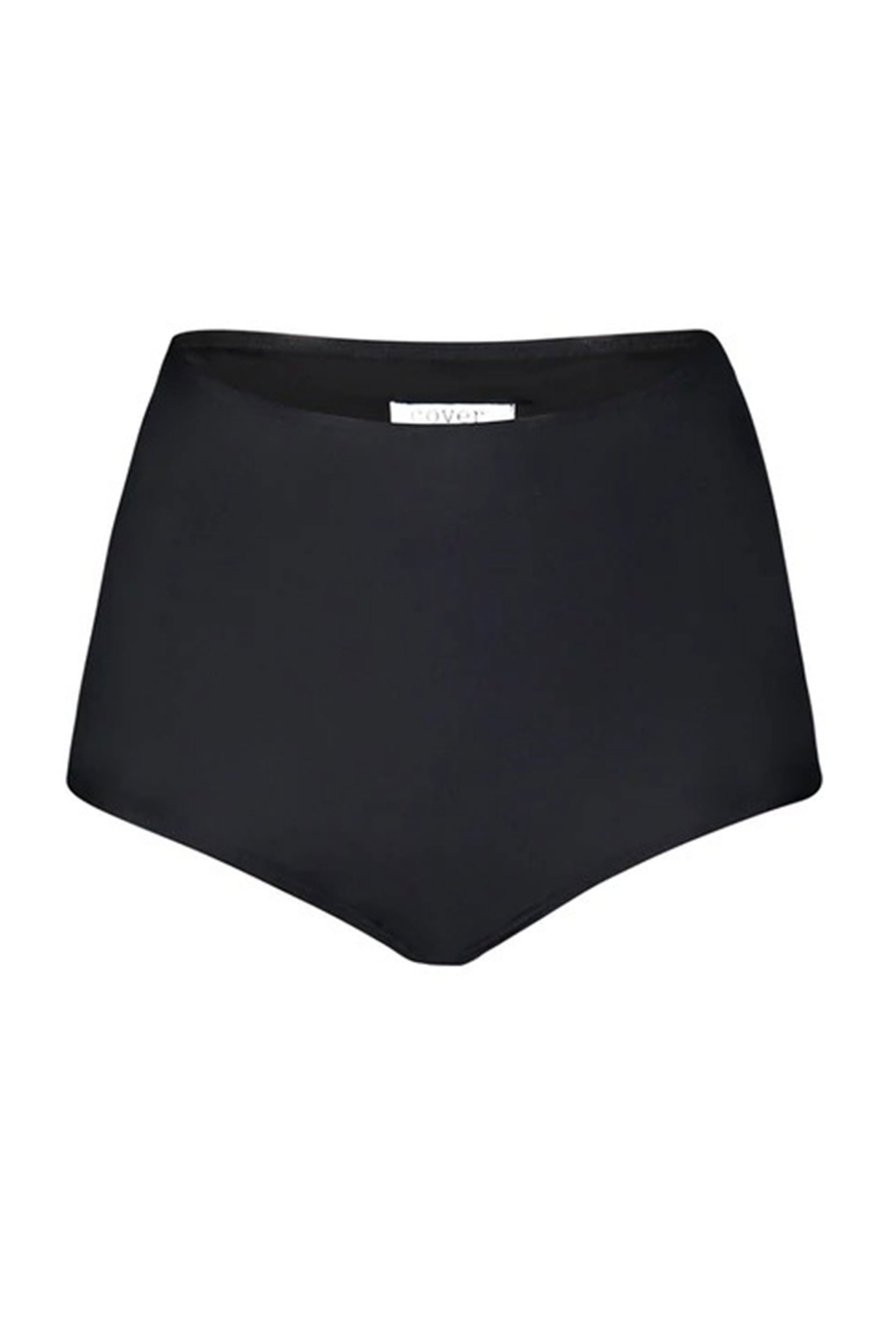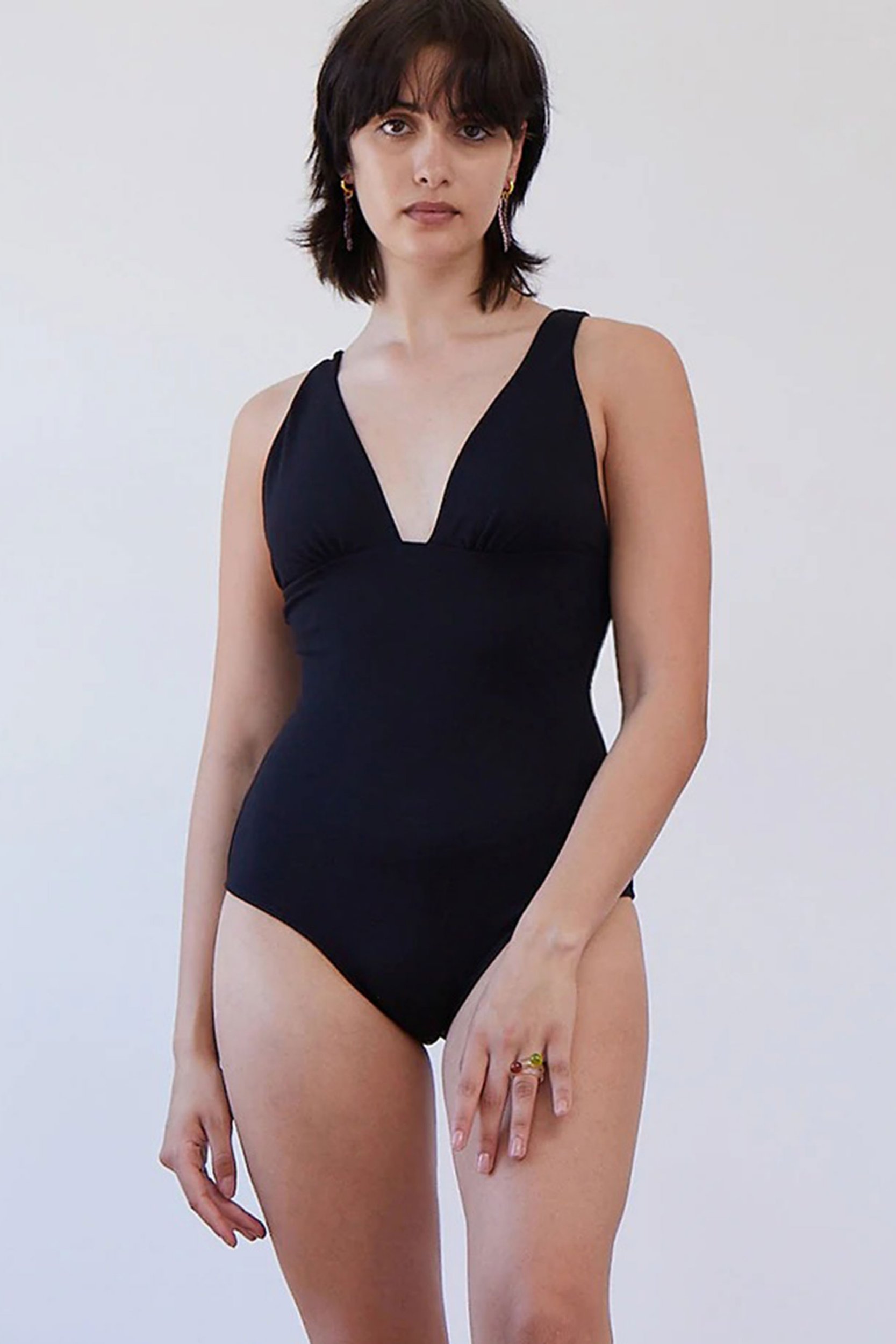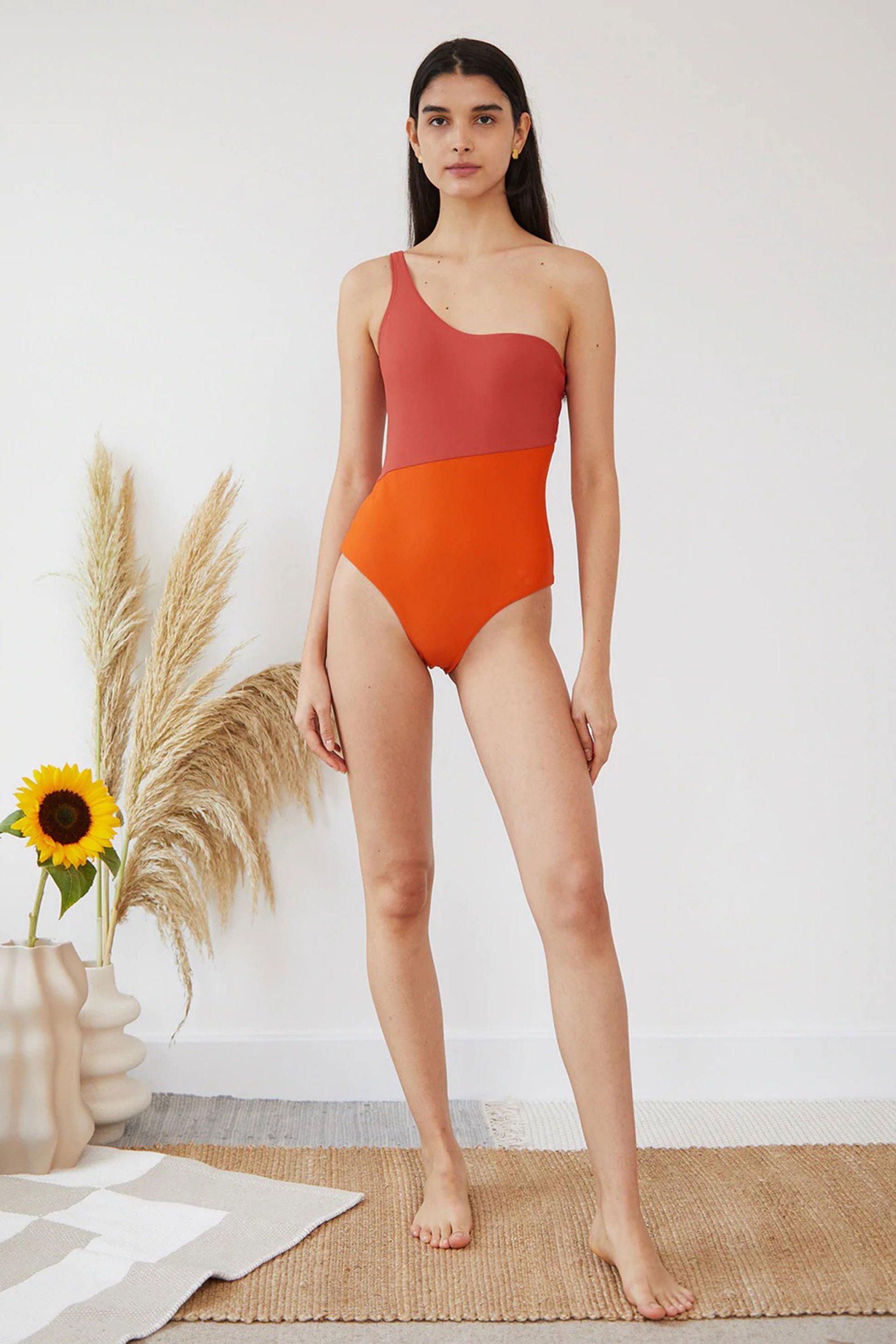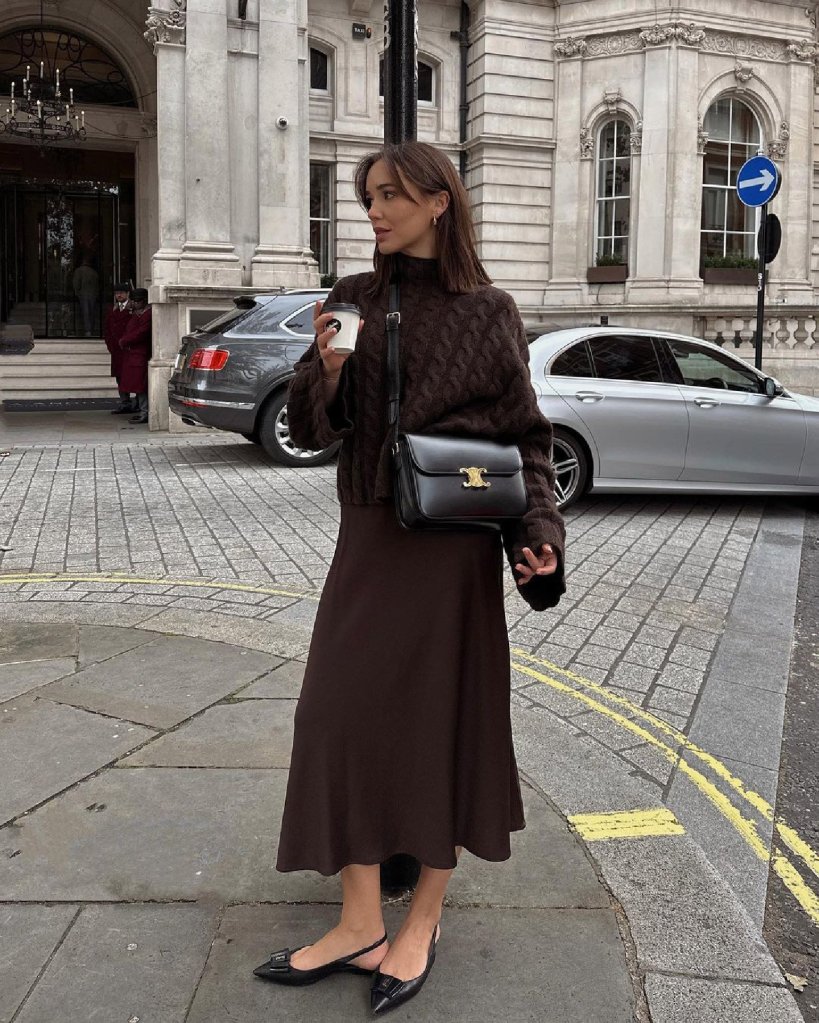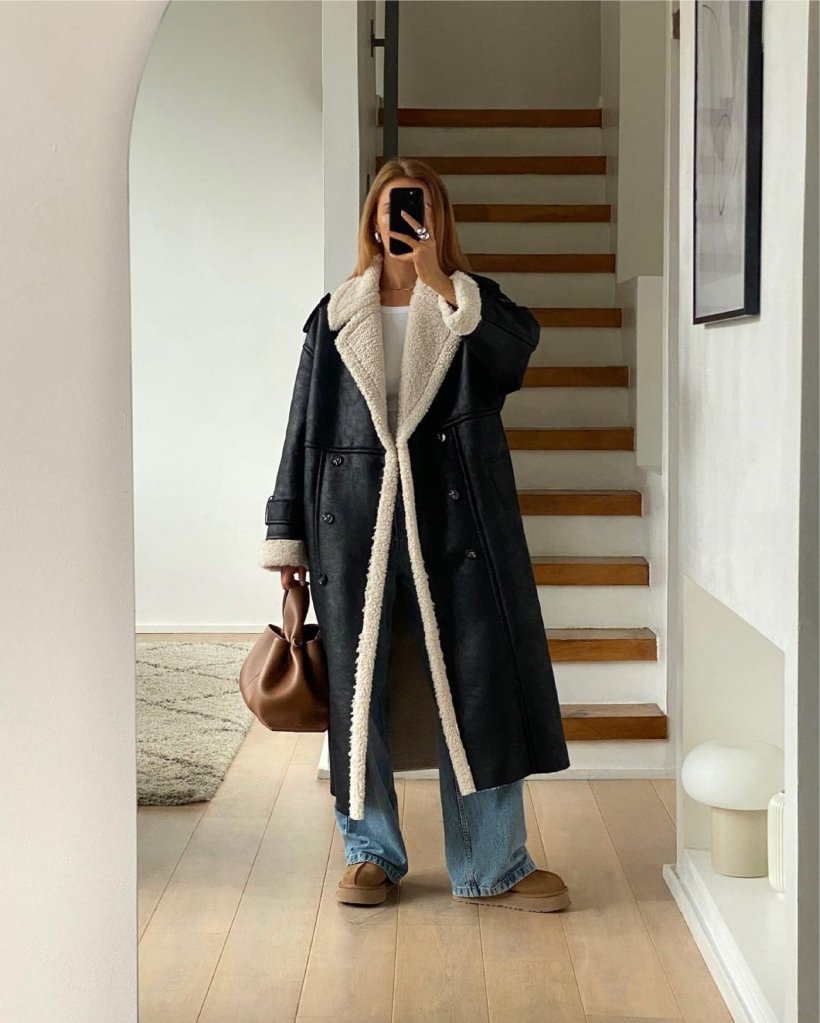Shopping for sustainably-made swimwear doesn’t need to be complicated. There are a few key things to look out for that will help you navigate the murky waters…
How do I know if swimwear is sustainable?
Look for brands that repurpose materials otherwise destined for landfill, such as Econyl (a regenerated nylon fibre made from old carpets and fishing nets) and Repreve (regenerated fibres made from recycled plastic bottles).
And keep your eyes peeled for those that offer transparency regarding their factory, and that have also considered the impact of packaging, tags and the swimwear lining.
While the tides are definitely changing, expect to pay a bit more for a sustainable piece since it costs more to ensure the conscious practices are in place. Rest assured, your stylish and sustainable swimwear will be worth it.
How do I look after swimwear to keep it in good condition?
When you’ve bought your sustainable swimwear, looking after it is key, because there’s nothing sustainable about buying new (albeit recycled!) swimwear every year. I always find that rinsing it after a day at the beach helps with longevity.
Avoid machine washing
And when you wash it, do so by hand with cold water and a delicate detergent. I’d also urge you to leave your swimwear to air dry, preferably in the shade to avoid discoloration.
Best for printed swimwear: Peony
Few brands have me lusting after sea and sand quite like Australian label Peony. The brand’s Instagram is brimming with such gorgeous sun-soaked snaps that just by scrolling through it you almost feel as though you’re soaking up the vitamin D. Almost. Peony is perfect proof that opting for consciously made swimwear doesn’t mean skimping on style.
Dreamy colours and prints are applied to flattering shapes to excellent effect. I’m particularly taken with the floral bikini. Besides being incredibly aesthetically pleasing, Peony can’t be accused of greenwashing. For its textured styles, the brand uses Repreve and for its printed styles, Peony uses Econyl. What’s more, all swimwear linings are made from a custom fabric, comprising 90% of Repreve, tags are made from recycled and FSC certified wood, and hygiene liners and dust bags are biodegradable. Boom!
Best for support: Tona
Tona is the brainchild of stylist Tona Stell, who combined her understanding of women’s’ bodies with a desire to not simply add to the inordinate amounts of waste already produced by the fashion industry but to deliver a swimwear brand that’s both consciously and inclusively created.
Samples are based on a UK size 16 and FF cup to ensure they offer adequate support, and are available in a UK size 8-20. Tona’s towelling fabrics (applied to chic structured, minimal two-pieces) are made using organic cotton (less damaging to the environment than its non-organic counterpart) with recycled polyamide linings, while printed styles are made from Econyl.
Fabrics are shipped by boat, in the interest of lessening carbon emissions, and the swimwear packaging itself is recyclable. Sustainable credentials aside, the super-cool checkerboard prints and ‘70s florals make Tona hard to resist.
Best for clever designs: Away That Day
South Africa-born Ingmae Kotz, a former stylist and dancer, launched Away That Day in 2018, with the intention of creating sustainably-made swimwear that doesn’t sacrifice sexy. And I can confirm, she’s done just that. A range of shades (from chartreuse and orchid to ivory and black) are applied to clever designs made for mixing and matching (the Tahiti top, for example, can be worn three different ways) in Kotz’s London studio.
All Away That Day pieces are made from Econyl, tags and labels from recycled materials and dust bags crafted from cornstarch! In a bid to go one step further, Away That Day also runs a ‘recycle your swim’ initiative, through which they accept tired or broken swimwear from ANY brand and send it on to their recycling partners who repurpose it for industrial materials such as carpet underlay. If you do this and drop the brand an email with the subject ‘recycle your swim’ you’ll also get 15% off your next purchase. Need I say more?
Best for ruching and frills: Ayla
Kirsty Ames & Heidi Sommerau launched Ayla with those beach days that merge into balmy evenings and languid nights in mind. Swimwear can be dressed up and down or switched in and out accordingly. Working with two boutique factories in Bali means the duo can be flexible with order sizes while also keeping a close eye on the quality of the garments emerging.
Repreve and Econyl are used for the swimwear, while cupro (a by-product from the cotton process, which is usually thrown away), Tencel, linen and organic cotton lend themselves to the beach cover-ups. Ruffles, watercolour-esque prints and smocked details make for sweet-but-not-saccharine designs, perfect for island life.
Best for sun protection: Cover
Formerly an investment banker, Lisa Moore launched swimwear brand Cover off the back of her sister’s brush with melanoma. Living in Texas and painfully aware of just how harmful the sun’s rays can be, Moore set out to find a stylish solution that would protect her skin, without acting as a hindrance (there’s a time and place for a wetsuit, but I’d rather not wrestle with one in the midday sun before jumping into the pool).
Enter, Cover: a line of uber-flattering short and long sleeve zip-up UPF 50+ swimsuits. For the minimalist amongst us, there’s navy and black iterations, while those who like their swimwear to pack a punch should seek out the checkerboard, houndstooth and stripe versions.
The best bit? Cover swimsuits are made from start to finish in an LA factory using the brand’s custom fabric constructed from recycled microfibres. Dive in!
Best for flattering cuts: Casa Raki
Fashion photographer Josephina A. Theo, who grew up on the Uruguayan coast of Punta del Este, credits her love affair with the sea as the inspiration for resort brand Casa Raki. Flattering fluid shapes that have the effect of being seamless in navy, terracotta and sky-blue are designed in London and made in Portugal using Econyl for smooth styles, and a renewable yarn sourced from castor beans for their textured counterparts.
Dresses, shirts and cover-ups are made of Oekto-Tex-certified cupro and organic cotton and collections are created in limited drops to help minimise waste. The pleasingly minimal Ana bikini top, £75, and Brazilian-cut Olivia bottoms, £40, are beckoning me. Beach please!
